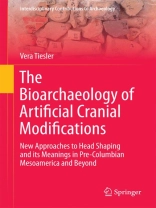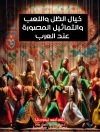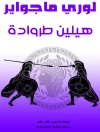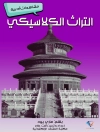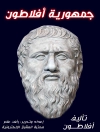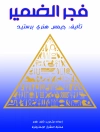The artificial shaping of the skull vault of infants expresses fundamental aspects of crafted beauty, of identity, status and gender in a way no other body practice does. Combining different sources of information, this volume contributes new interpretations on Mesoamerican head shaping traditions. Here, the head with its outer insignia was commonly used as a metaphor for designating the “self” and personhood and, as part of the body, served as a model for the indigenous universe. Analogously, the outer “looks” of the head and its anatomical constituents epitomized deeply embedded worldviews and longstanding traditions. It is in this sense that this book explores both the quotidian roles and long-standing ideological connotations of cultural head modifications in Mesoamerica and beyond, setting new standards in the discussion of the scope, caveats, and future directions involved in this study. The systematic examination of Mesoamerican skeletal series fosters an explained review of indigenous cultural history through the lens of emblematic head models with their nuanced undercurrents of religious identity and ethnicity, social organization and dynamic cultural shift. The embodied expressions of change are explored in different geocultural settings and epochs, being most visible in the centuries surrounding the Maya collapse and following the cultural clash implied by the European conquest. These glimpses on the Mesoamerican past through head practices are novel, as is the general treatment of methodology and theoretical frames. Although it is anchored in physical anthropology and archaeology (specifically bioarchaeology), this volume also integrates knowledge derived from anatomy and human physiology, historical and iconographic sources, linguistics (polisemia) and ethnography. The scope of this work is rounded up by the transcription and interpretation of the many colonial eye witness accounts on indigenous head treatments in Mesoamerica andbeyond.
Inhoudsopgave
Introduction.- PART I: INTERDISCIPLINARY APPROACHES TO ARTIFICIAL CRANIAL MODIFICATION.- Cultural frameworks for studying artificial cranial modifications.- Physical embodiment, identity, age, and gender.- Cranial expansion and artificial vault modifications.- Reconstructing ancient head-shaping traditions from the skeletal record.- Source compilation on head-shaping practices in Hispanic America, with comments by Pilar Zabala.- PART II REGIONAL APPROACHES: HEAD PRACTICES AND THEIR CULTURAL MEANINGS IN PRE-COLUMBIAN MESOAMERICA AND BEYOND.- Meanings of head-shaping practices in Mesoamerica.- Emulating Olmec gods through head form. Origins and Preclassic Period.- Head shapes in Classic period Mesoamerica.- Growing up Maya. Gender, Identity and dynasty.- Head-shaping during the second millennium. Postclassic and post-contact Mesoamerica.- Conclusions: New perspectives for studying head-shaping practices in Mesoamerica.
Over de auteur
Vera Tiesler is currently research professor at the University of Yucatan, Mexico. She holds a Ph.D. in anthropology (National University of Mexico, Mexico), a B.A. degree in art history (Tulane University, New Orleans, USA), B.A. and M.A. degrees in archaeology (Escuela Nacional de Antropología e Historia, Mexico), and five years of additional training in human medicine (Medizinische Hochschule Hannover, Germany, and Politécnico Nacional, Mexico). Tiesler is member of the Mexican National Research Foundation and of the Mexican National Academy of Sciences. Her research has focused on the integrated study of human remains within their archaeological, cultural and social undercurrents. Her studies assess general health and dietary conditions, along with physical embodiment and mortuary traditions among pre-Hispanic and colonial Maya. She has participated in several field projects and has studied hundreds of skeletal collections from Mesoamerica, the Caribbean, Andes, and Europe, including forensic research. Recent publications include the co-edited books: Janaab’ Pakal of Palenque. Life and Death of a Maya Ruler (Arizona University Press), Natives, Europeans, and Africans in Colonial Campeche. History and Archaeology (University Press of Florida), and New Perspectives on Human Sacrifice and Ritual Body Treatments in Ancient Maya Society (Springer Press).
